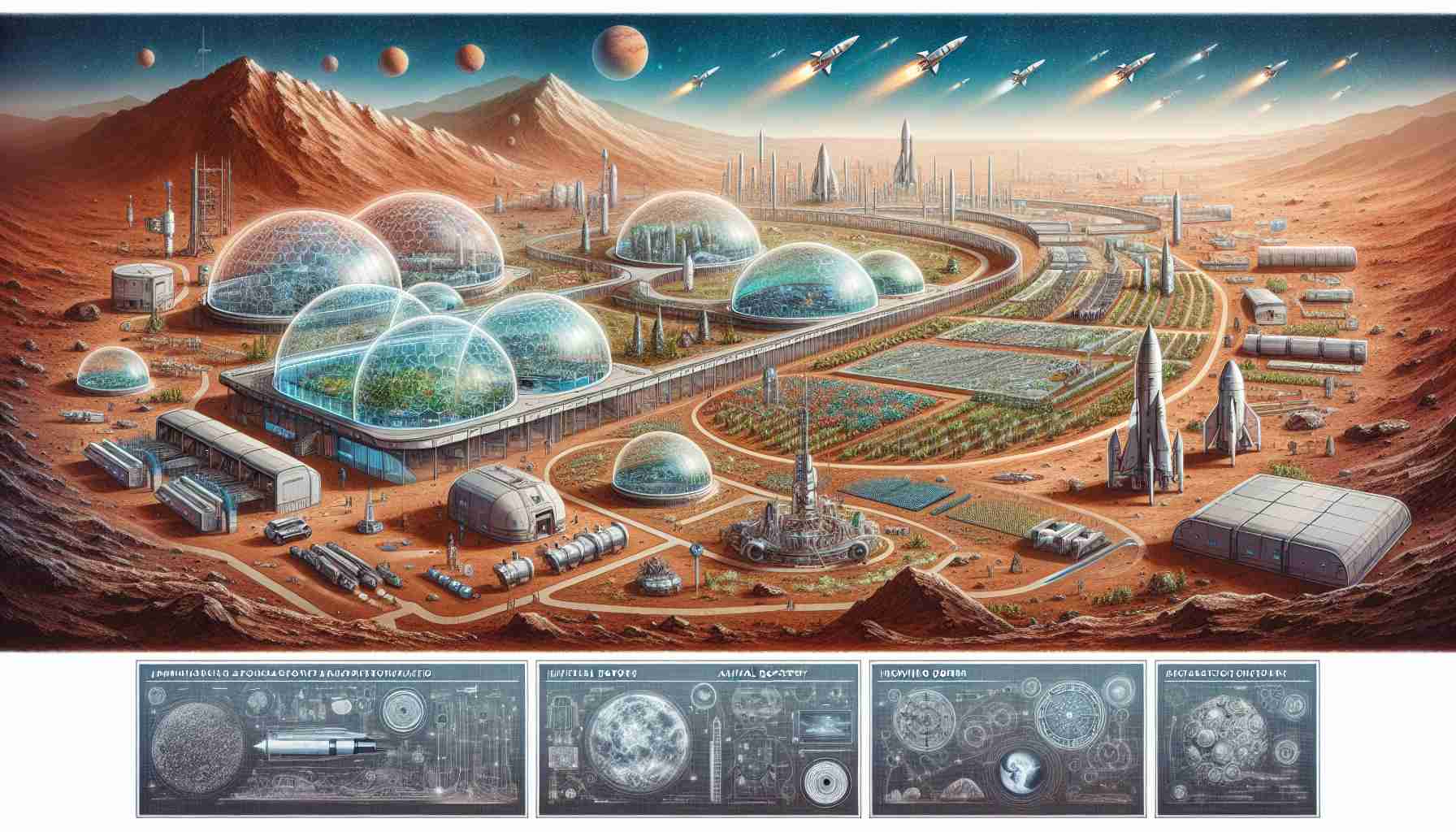- SpaceX’s vision, led by Elon Musk, aims to make Mars colonization a reality.
- The Starlink satellite network seeks to provide global high-speed internet, transforming global connectivity.
- Falcon 9, the first reusable orbital-class rocket, reduces costs and accelerates mission frequencies.
- Challenges include risks and obstacles in manned Mars missions, like life support and radiation shielding.
- The space economy is expected to reach $1 trillion by 2023, driven by private and national collaborations.
- Space exploration isn’t just about Mars; it reshapes humanity’s cosmic role and responsibilities.
Space exploration is on the cusp of an extraordinary leap, fueled by the pioneering vision of SpaceX and the determined ambition of Elon Musk. Alongside global influencers like former President Donald Trump, these visionaries are set to transform the dream of colonizing Mars from a distant fantasy into a tangible reality.
The cornerstone of SpaceX’s endeavors is the groundbreaking Starlink satellite network. This ambitious project aims to blanket the globe in high-speed internet, reaching underserved areas traditionally bypassed by conventional infrastructure. As emphasized by experts at the Kennedy Space Center, Starlink stands to dramatically reshape global connectivity, offering reliable service even in the remotest corners of the Earth.
SpaceX’s innovations are spearheaded by the versatile Falcon 9 rocket, which recently showcased its prowess by deploying 23 Starlink satellites into orbit. Marking its place as the first orbital-class reusable launch vehicle, Falcon 9 slashes costs and ramps up mission frequencies, setting the stage for the company’s ambitious Mars expeditions.
Yet, challenges loom large. A recent hiccup involving SpaceX’s Starship prototype, necessitating aviation adjustments to avoid debris, underscores the inherent risks of cutting-edge aerospace ventures. While reusable rockets have transformed mission economics, hurdles such as life support systems, radiation shielding, and sustainable habitats present formidable barriers to a manned Martian adventure.
The Pros: Reusability reduces costs, Starlink enhances global connectivity, and frequent launches speed up exploration.
The Cons: Safety challenges persist, technological hurdles remain vast, and environmental impacts raise sustainability concerns.
The explosion in space exploration and satellite technology investments heralds a new era. As the global space economy races towards a staggering $1 trillion by 2023, collaboration between private enterprises and nations promises to unlock untold potential. This journey isn’t just about inhabiting Mars; it redefines humanity’s cosmic aspirations and responsibilities.
The New Space Race: Opportunities and Challenges on the Path to Mars
How Does SpaceX Plan to Overcome the Challenges of Martian Colonization?
SpaceX plans to overcome the challenges of Martian colonization through a multi-faceted approach that combines technological innovation and collaboration. The company is focusing on the following key areas:
1. Advanced Life Support Systems: Developing closed-loop environmental control and life-support systems that can recycle air, water, and nutrients efficiently.
2. Radiation Shielding: Researching new materials and technologies to protect astronauts from harmful cosmic radiation and solar particles during long-duration missions.
3. Sustainable Habitats: Designing habitats that can be built using Martian materials, reducing the need for resource-heavy transport from Earth and thus facilitating sustainable living conditions.
For more information on SpaceX’s innovative strategies, visit the official SpaceX website.
What Are the Environmental Concerns Associated with SpaceX’s Current Initiatives?
Despite the promising potential of SpaceX’s initiatives, environmental concerns need to be addressed. These include:
1. Space Debris: The increase in satellite launches poses a risk of collision and debris generation, threatening both safety and long-term sustainability of space operations.
2. Local Ecosystems: Launch sites, like those used by SpaceX, can disrupt local wildlife and habitats, necessitating careful environmental assessments and mitigation strategies.
3. Carbon Emissions: Rocket launches contribute to greenhouse gas emissions. SpaceX is exploring the use of sustainable fuels to minimize the environmental impact.
To stay updated on space-related environmental issues, the NASA website offers comprehensive resources and insights.
How Is the Global Space Market Expected to Evolve in the Coming Years?
The global space market is anticipated to reach a valuation of $1 trillion by 2023, bolstered by technological advancements and strategic collaborations. Key trends include:
1. Increased Private Sector Participation: Companies like SpaceX are leading the way with reusable rocket technology and commercial satellite networks.
2. International Collaborations: Partnerships between nations and private enterprises are expected to drive innovation and reduce mission costs.
3. Diversified Applications: Beyond interplanetary exploration, satellite technologies are expanding in areas such as Earth observation, climate monitoring, and communications.
For a comprehensive analysis of the space sector’s growth trajectory, check out the Boeing website.
In conclusion, while the journey to Mars and beyond presents significant challenges, it also offers unprecedented opportunities for technological advancements and global collaboration, redefining humanity’s role in the cosmos.

















